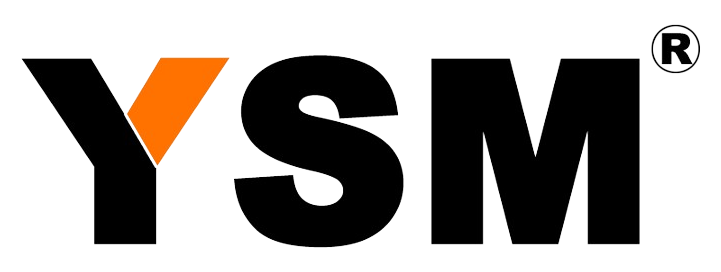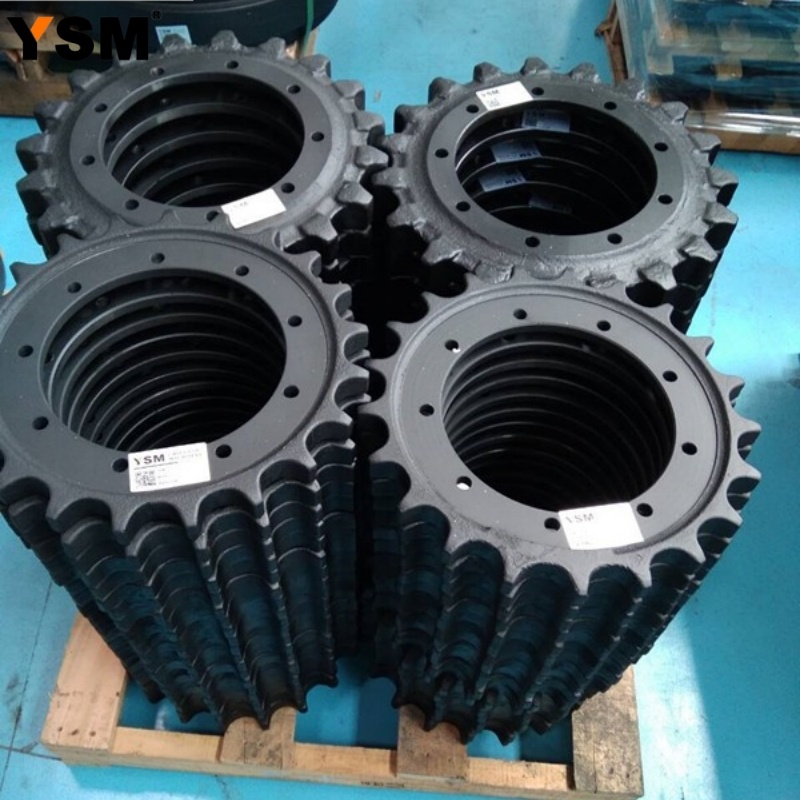Why Choosing the Right Bucket Pin for Your EX120 Matters: A Comprehensive Guide
Why Choosing the Right Bucket Pin for Your EX120 Matters When it comes to maintaining and operating your EX120 excavator, the choice of bucket pin plays a pivotal role in performance and durability. Understanding the importance of selecting the right bucket pin can not only prolong the life of your machinery but also enhance its operational efficiency. In this comprehensive guide, we will delve
Jul 31,2025

Why Choosing the Right Bucket Pin for Your EX120 Matters
When it comes to maintaining and operating your EX120 excavator, the choice of bucket pin plays a pivotal role in performance and durability. Understanding the importance of selecting the right bucket pin can not only prolong the life of your machinery but also enhance its operational efficiency. In this comprehensive guide, we will delve into the reasons why the correct bucket pin is essential, what options are available, and how to choose the best one for your needs.
Table of Contents
- Importance of Selecting the Right Bucket Pin
- Different Types of Bucket Pins for EX120
- Material Quality: Why It Matters
- Installation: Ensuring Proper Fit
- Maintenance Tips for Extending Bucket Pin Life
- Impact of Bucket Pin on Performance
- Cost-Effectiveness of Choosing the Right Pin
- Expert Tips for Choosing Bucket Pins
- Frequently Asked Questions about Bucket Pins
- Conclusion
Importance of Selecting the Right Bucket Pin
The bucket pin is a small yet vital component that connects the bucket to the arm of your EX120 excavator. **Choosing the right bucket pin affects various aspects of your machine's operation.** When the pin is of the correct size and type, it ensures smoother operation, reduces wear and tear, and maintains the structural integrity of the bucket and arm.
A poorly chosen pin can lead to several complications, including misalignment of your bucket, increased vibration, and premature wear on both the pin and the attachment points. The right pin will provide a snug fit, preventing unnecessary movement that can lead to mechanical failure. This can save you significant time and money in repairs and downtime.
Different Types of Bucket Pins for EX120
There are various types of bucket pins available for the EX120 digger, each designed for specific applications and conditions. Understanding these types will help you choose the right option for your machinery.
Standard Bucket Pins
Standard bucket pins are the most common type, offering reliability for general excavation tasks. These pins are typically made from high-strength steel and are designed to withstand regular wear.
Heavy-Duty Bucket Pins
If your work environment involves heavy loads or challenging terrain, consider heavy-duty bucket pins. These pins are reinforced with additional material, making them more resistant to bending and breaking.
Quick-Release Pins
Quick-release bucket pins enable faster attachment changes, which can greatly enhance productivity on the job site. They are designed for easy installation and removal without the need for specialized tools.
Choosing the Right Type
When selecting a bucket pin, consider the specific tasks your EX120 will perform. Heavy-duty pins are preferable in construction sites, while standard pins might suffice for lighter work.
Material Quality: Why It Matters
The material used in manufacturing bucket pins is crucial for durability and performance. High-quality materials translate to better resistance against wear, corrosion, and fatigue.
Steel Grade Selection
Most bucket pins are constructed from high-carbon steel or alloy steel. High-carbon steel offers excellent hardness and durability, while alloy steel provides enhanced toughness and flexibility. **Choosing pins made from these materials will ensure they withstand the rigors of excavation work.**
Coatings and Treatments
Additionally, look for bucket pins that have undergone surface treatments or coatings, such as galvanization or chrome plating. These treatments provide added protection against corrosion and extend the lifespan of the pins.
Installation: Ensuring Proper Fit
Proper installation is critical for the effective operation of bucket pins. A correctly installed pin ensures that the bucket is securely attached and functions as intended.
Steps for Correct Installation
To install a bucket pin correctly, follow these steps:
1. **Clean the pin and attachment points** to remove dirt and debris.
2. **Align the bucket and arm** to ensure proper fit.
3. **Insert the bucket pin** through the attachment points.
4. **Secure the pin** with any necessary clips or bolts to prevent it from dislodging during operation.
Common Installation Mistakes to Avoid
Avoid forcing the pin into place or using the wrong size pin, as this can lead to damage. Always ensure that the pin moves freely within the attachment points before finalizing the installation.
Maintenance Tips for Extending Bucket Pin Life
Maintaining your bucket pin is essential for ensuring its longevity and optimal performance. Regular maintenance checks can prevent issues from arising and make your equipment more efficient.
Regular Inspections
Conduct regular inspections of your bucket pin and surrounding components. Look for signs of wear, deformation, or rust. Early detection of these issues can prevent more significant problems down the line.
Lubrication
Proper lubrication is vital for reducing friction between the pin and attachment points. Use high-quality grease and apply it according to the manufacturer’s recommendations. This practice not only prolongs the life of the pin but also contributes to smoother operation.
Environment Considerations
Consider the working environment of your EX120. If operating in muddy, wet, or corrosive conditions, more frequent maintenance may be necessary. Always clean the area around the bucket pin after use to prevent dirt accumulation.
Impact of Bucket Pin on Performance
The performance of your EX120 excavator heavily relies on the quality of the bucket pin. A well-chosen pin can enhance operational efficiency and power transfer from the machine to the bucket.
Operational Efficiency
When the bucket pin fits properly, it allows for smoother movement, which translates to increased productivity. **A misaligned or poorly fitting pin can lead to extra strain on the machine, resulting in decreased performance and potential breakdowns.**
Power Transfer
Selecting a high-quality bucket pin ensures optimal power transfer during operation. The right pin design minimizes energy loss, allowing the excavator to perform tasks more effectively with less fuel consumption.
Cost-Effectiveness of Choosing the Right Pin
Investing in the right bucket pin may seem like a small detail, but it can lead to significant cost savings in the long run.
Reduced Downtime
Choosing a durable, high-quality bucket pin minimizes the chances of equipment failure, which can lead to costly downtime. This reliability ensures that your excavator remains operational, maintaining productivity.
Lower Maintenance Costs
A properly selected and installed bucket pin reduces the need for frequent repairs and replacements. By avoiding premature wear, you spend less on maintenance, enhancing your overall return on investment.
Expert Tips for Choosing Bucket Pins
To make the most informed decision when selecting a bucket pin for your EX120, consider these expert tips:
Consult Manufacturer Recommendations
Always refer to the manufacturer’s specifications for your EX120. They provide valuable insights into the types of bucket pins that are compatible with your machine.
Assess Your Work Requirements
Evaluate the specific tasks you'll be performing with your excavator. This assessment will help you understand whether you need standard, heavy-duty, or quick-release pins.
Prioritize Quality Over Cost
While cheaper alternatives may be tempting, investing in a high-quality bucket pin pays off in terms of durability and performance. Look for reputable brands known for their reliability.
Frequently Asked Questions about Bucket Pins
1. What is the average lifespan of a bucket pin?
The lifespan of a bucket pin varies based on usage, material quality, and maintenance. However, with proper care, a high-quality pin can last several years.
2. How often should I inspect my bucket pin?
Regular inspections should be conducted every few weeks or after each heavy work period to ensure the pin remains in good working condition.
3. Can I use a different brand of bucket pin on my EX120?
While it is possible to use different brands, it is essential to ensure that the pin meets the specifications required for your EX120 excavator.
4. What are the signs of a worn-out bucket pin?
Signs include excessive play in the bucket, unusual vibrations during operation, and visible wear or deformation on the pin.
5. Is lubrication necessary for bucket pins?
Yes, regular lubrication is critical for reducing friction and wear and ensuring the smooth operation of the bucket pin.
Conclusion
Selecting the right bucket pin for your EX120 excavator is a crucial decision that impacts the machine’s performance, longevity, and operational efficiency. By understanding the importance of material quality, proper installation, and ongoing maintenance, you can make informed choices that enhance the functionality of your equipment. Take the time to assess your specific needs and consult expert recommendations to ensure that you maximize your investment in your excavator. With the right bucket pin in place, you can expect not only improved performance but also significant cost savings over time.
PREVIOUS:
Related Posts
How Should The Supporting Wheels Be Selected To Avoid Stepping On Thunder?
High-quality support wheels mainly depend on the performance of its steel. The material of the roller body is generally 50Mn, 40Mn2, (MN: synonymous with the element of manganese).
Carrier Wheels Are Suitable For Various Models At Home And Abroad
Sprocket wheels are mainly used in various crawler bulldozers, excavators, pavers, milling machines, rotary drilling rigs or other crawler machinery equipment at home and abroad.
Contact Us
E-mail :
sales@china-ysm.com
Phone/WhatsApp:
+86-18606961587
Address:
No.8 Binjiang Street, Binjiang Industrial Zone, Xiamei Town, Nan An City, Quanzhou City, Fujian Province, China







